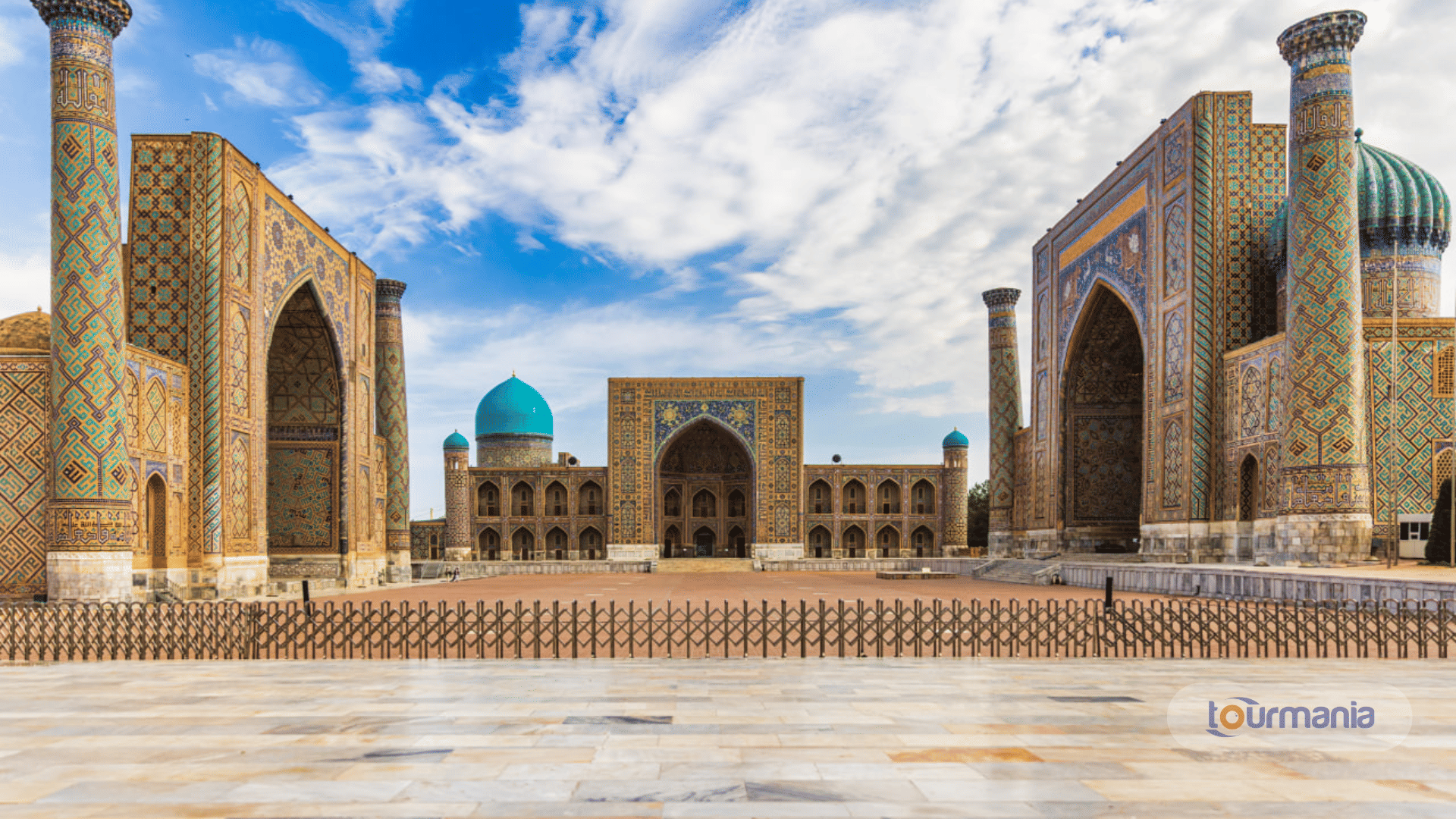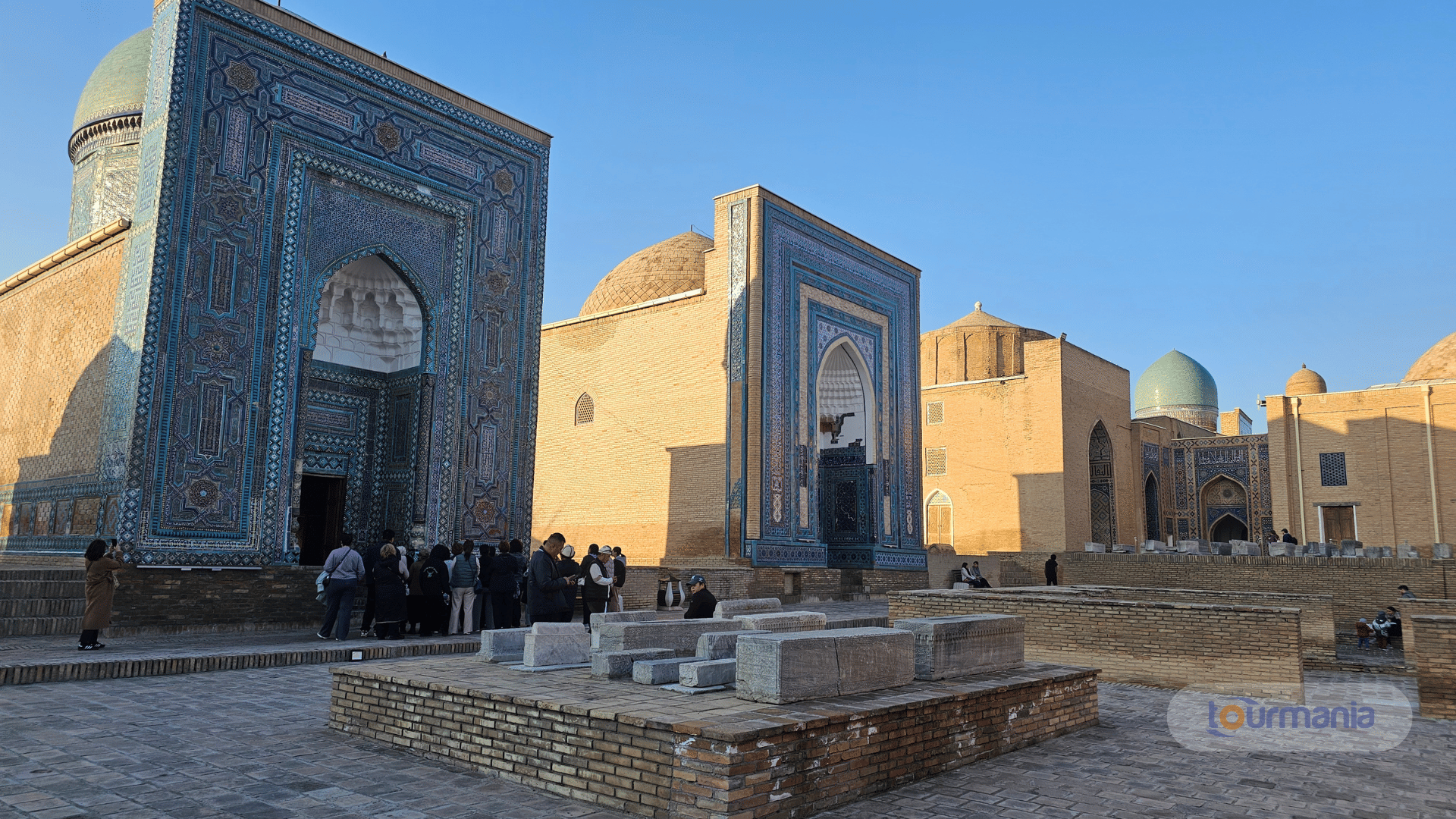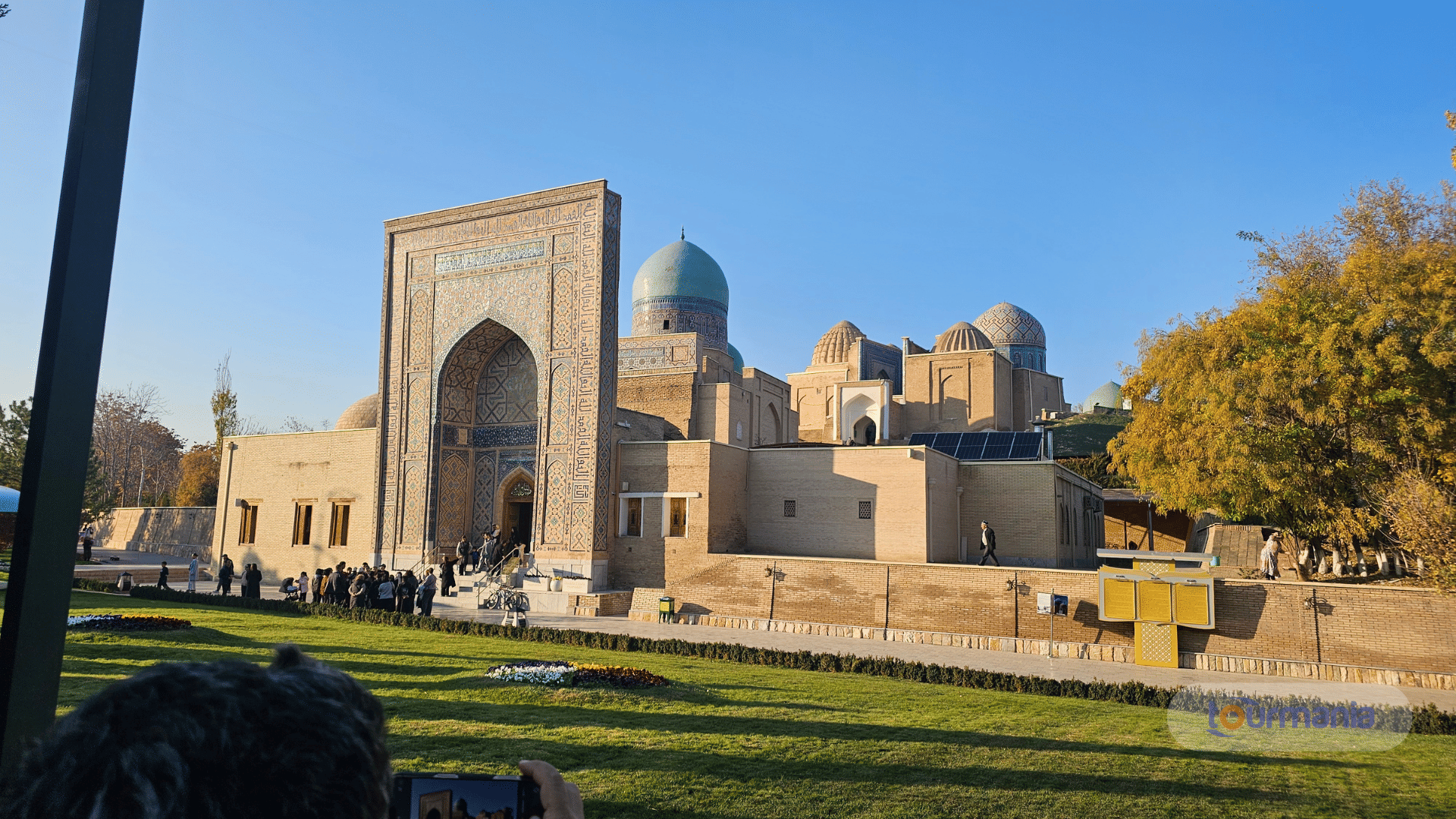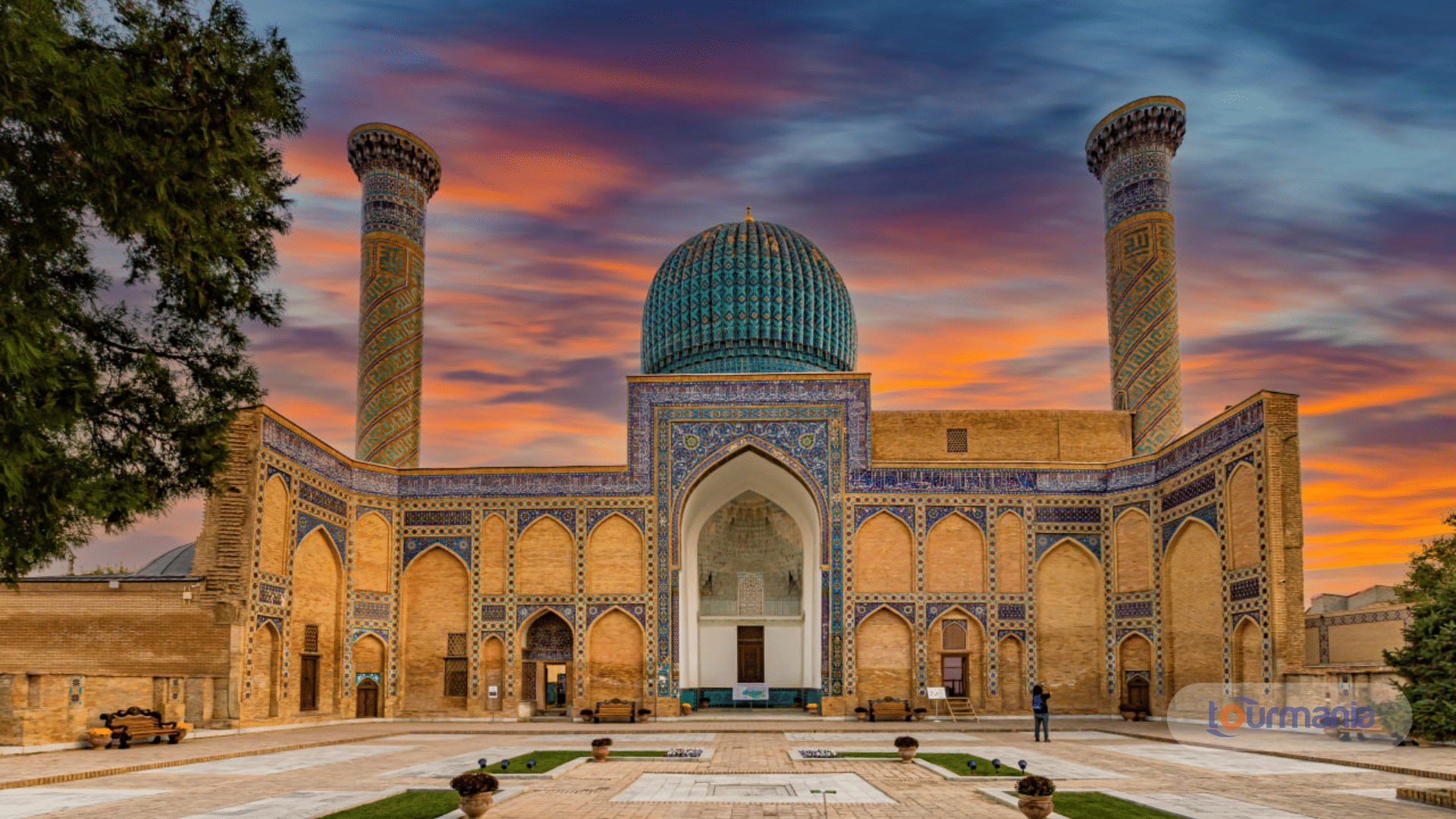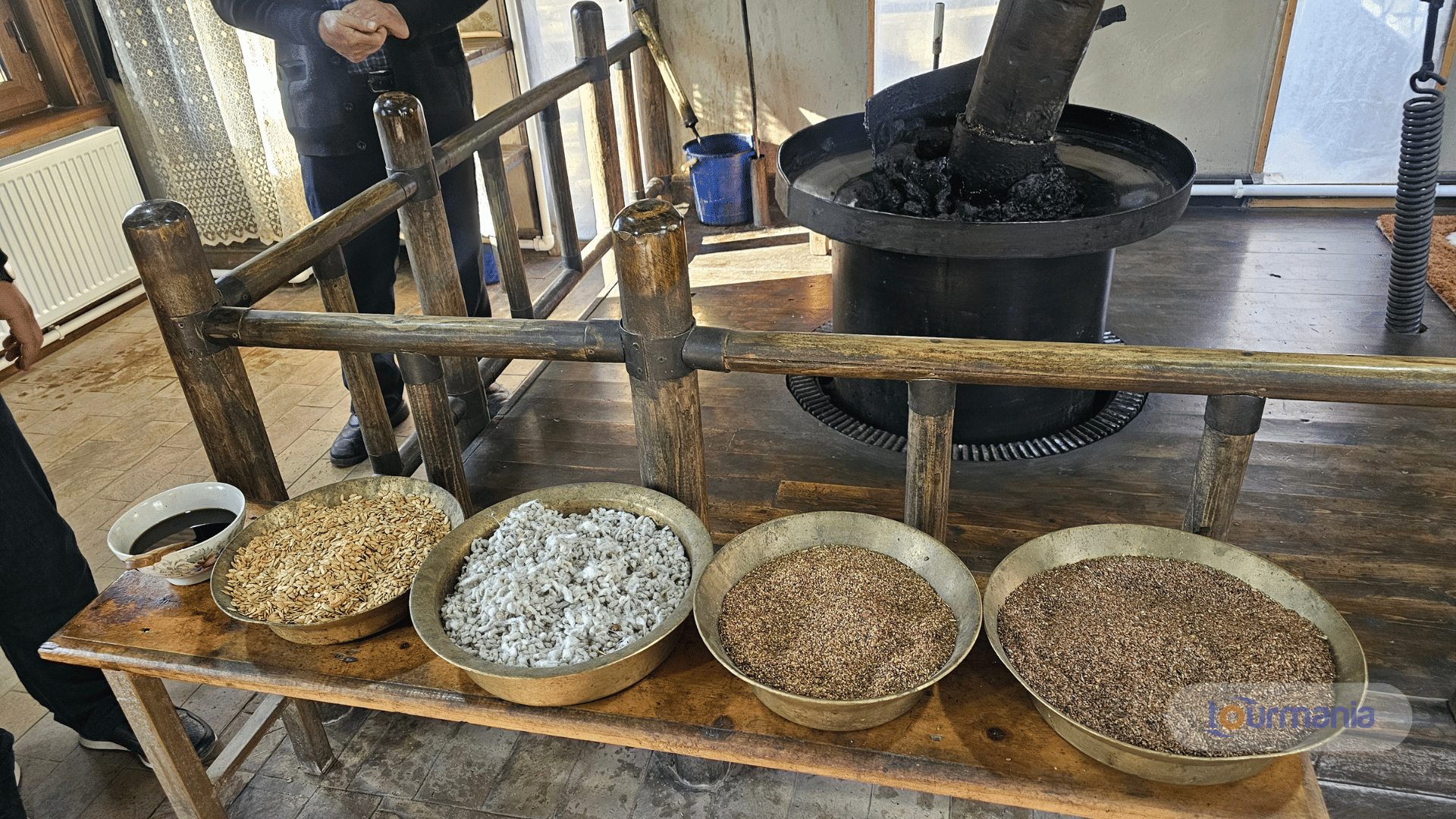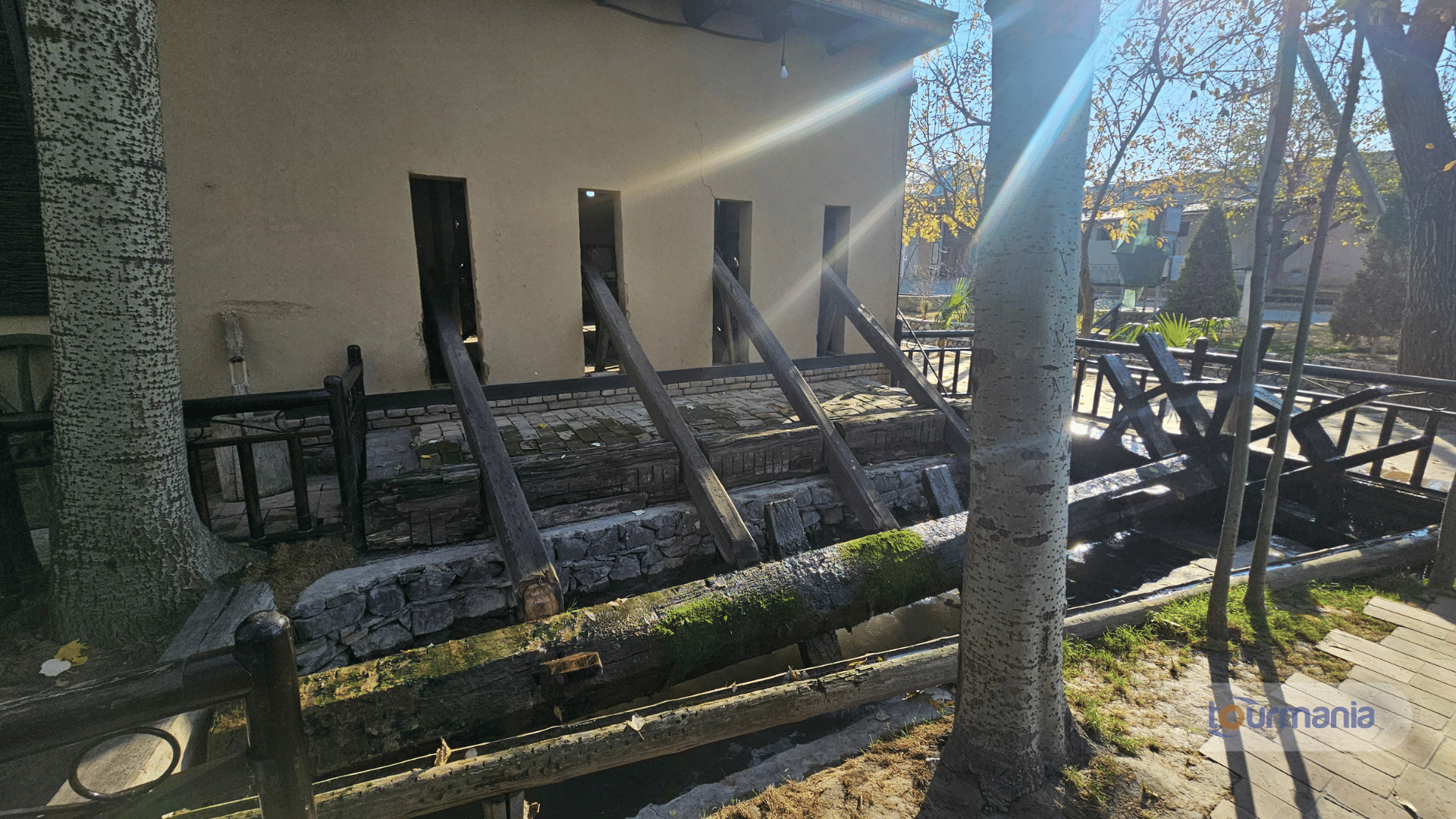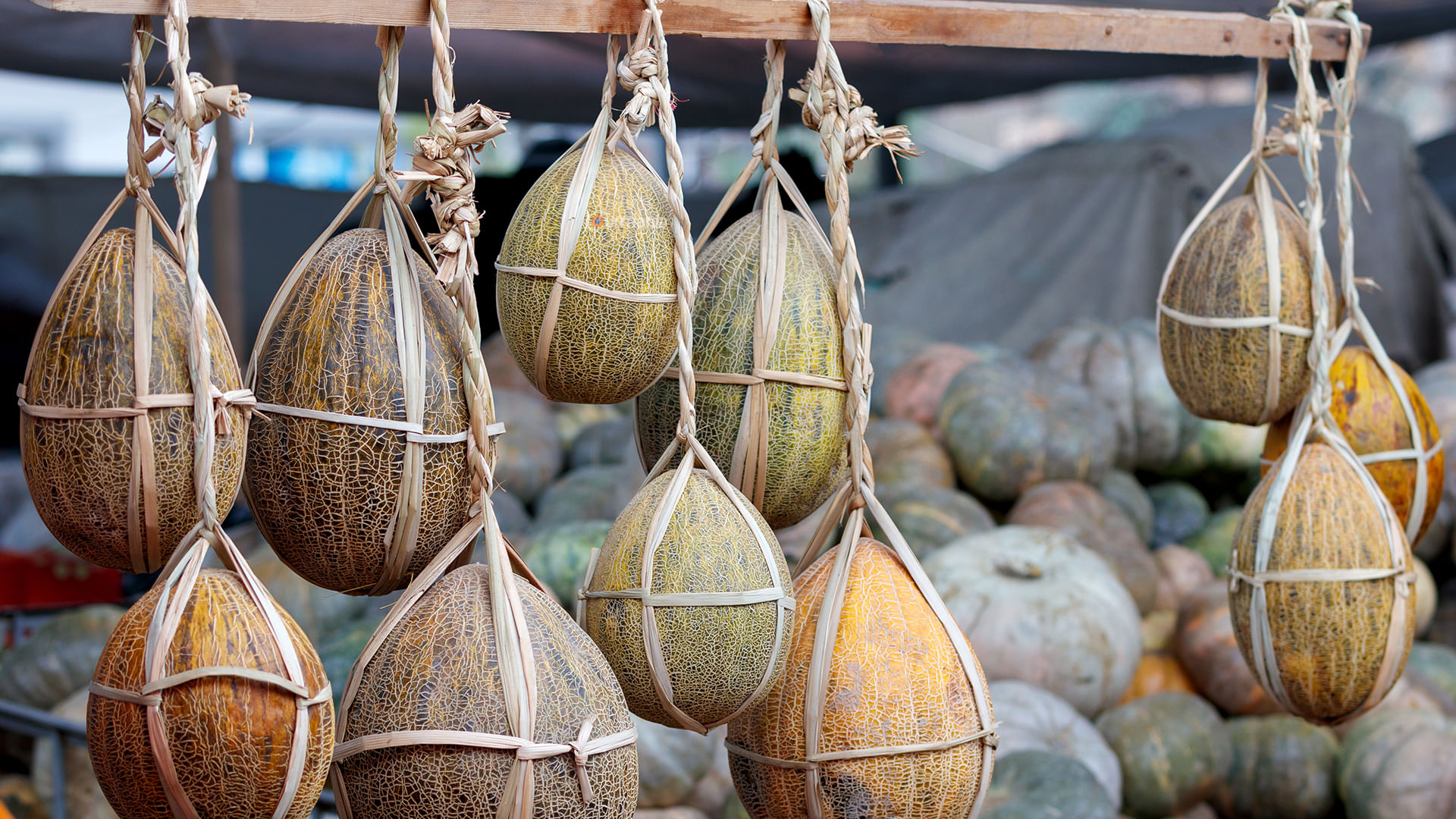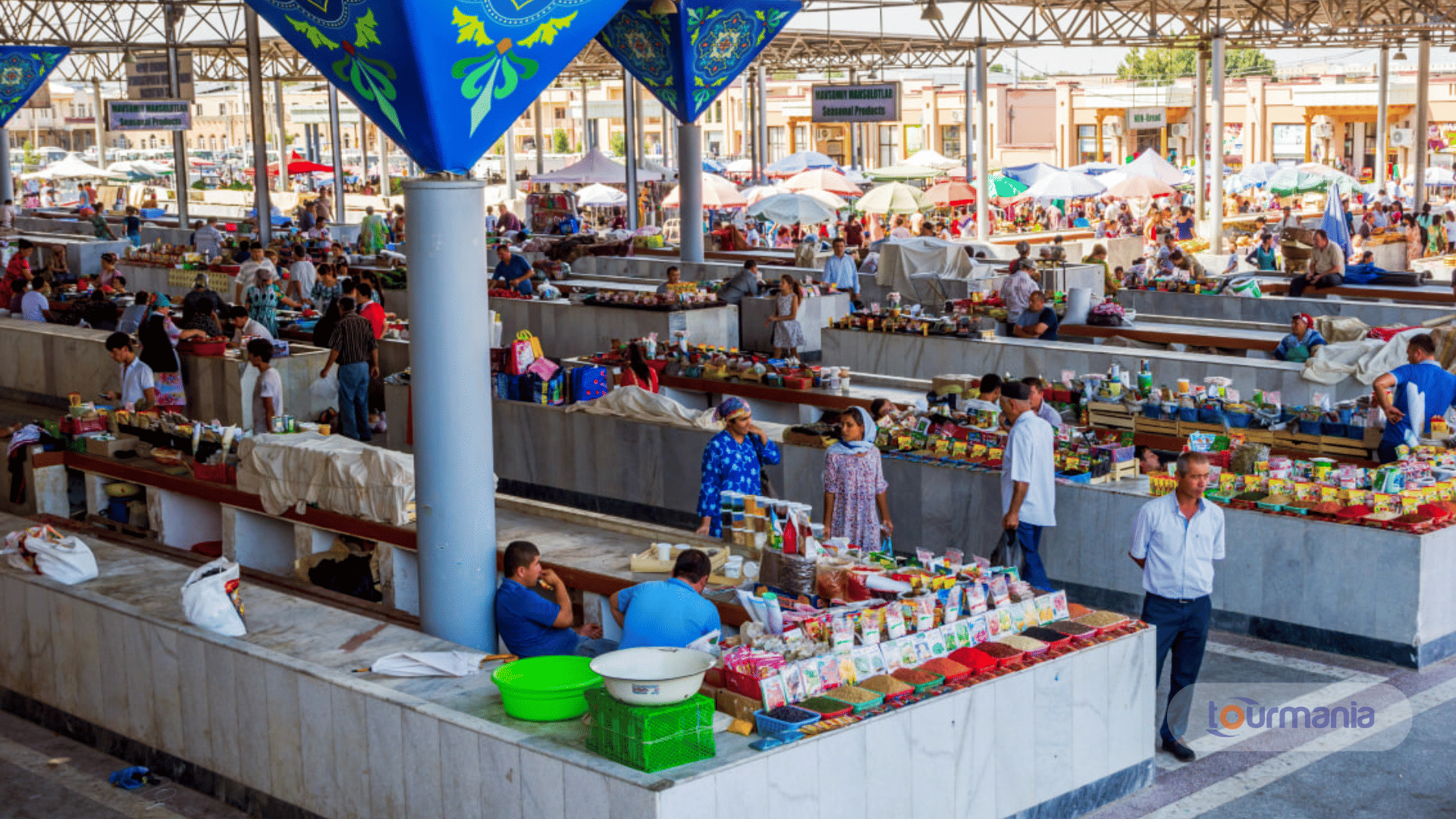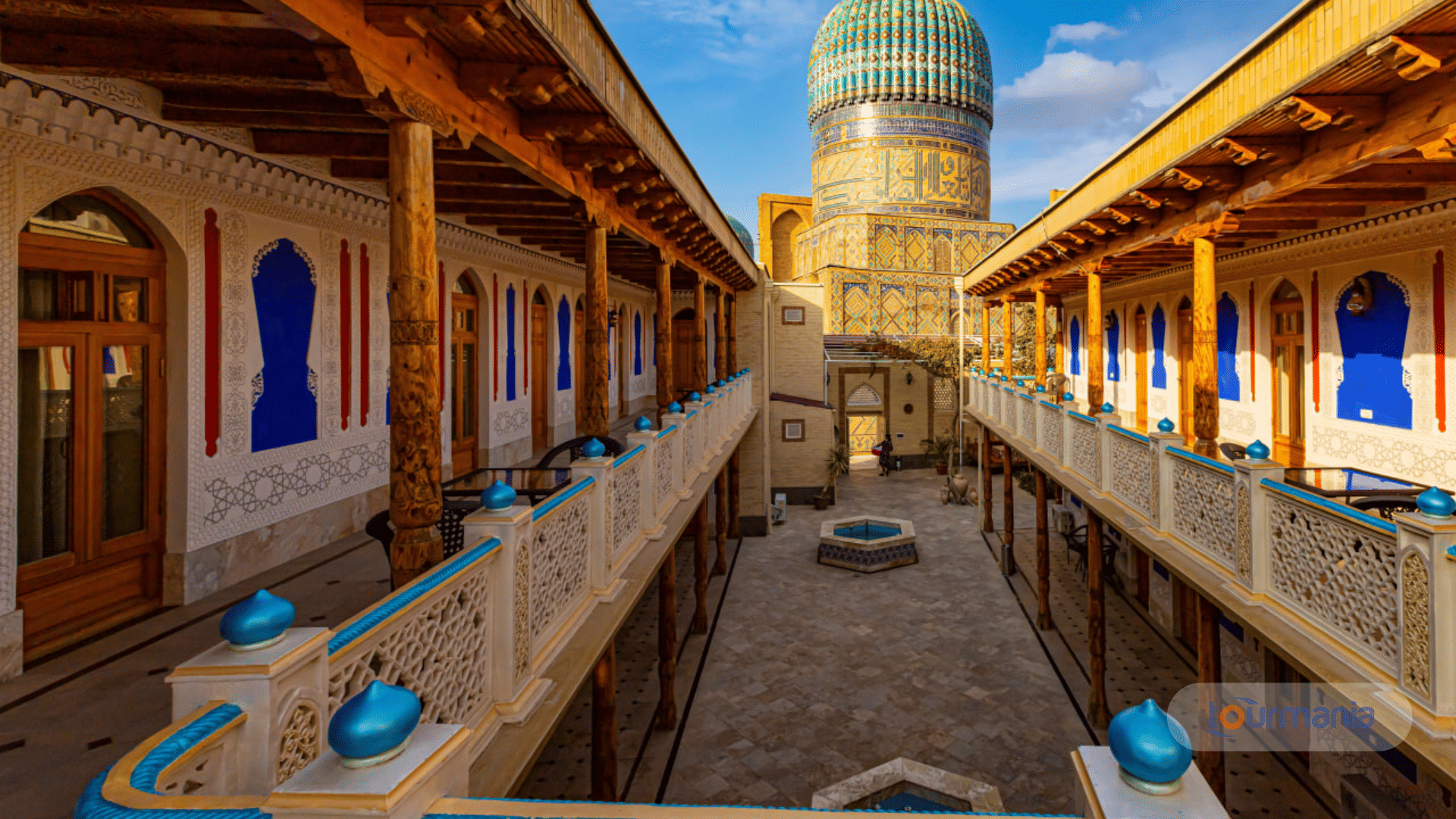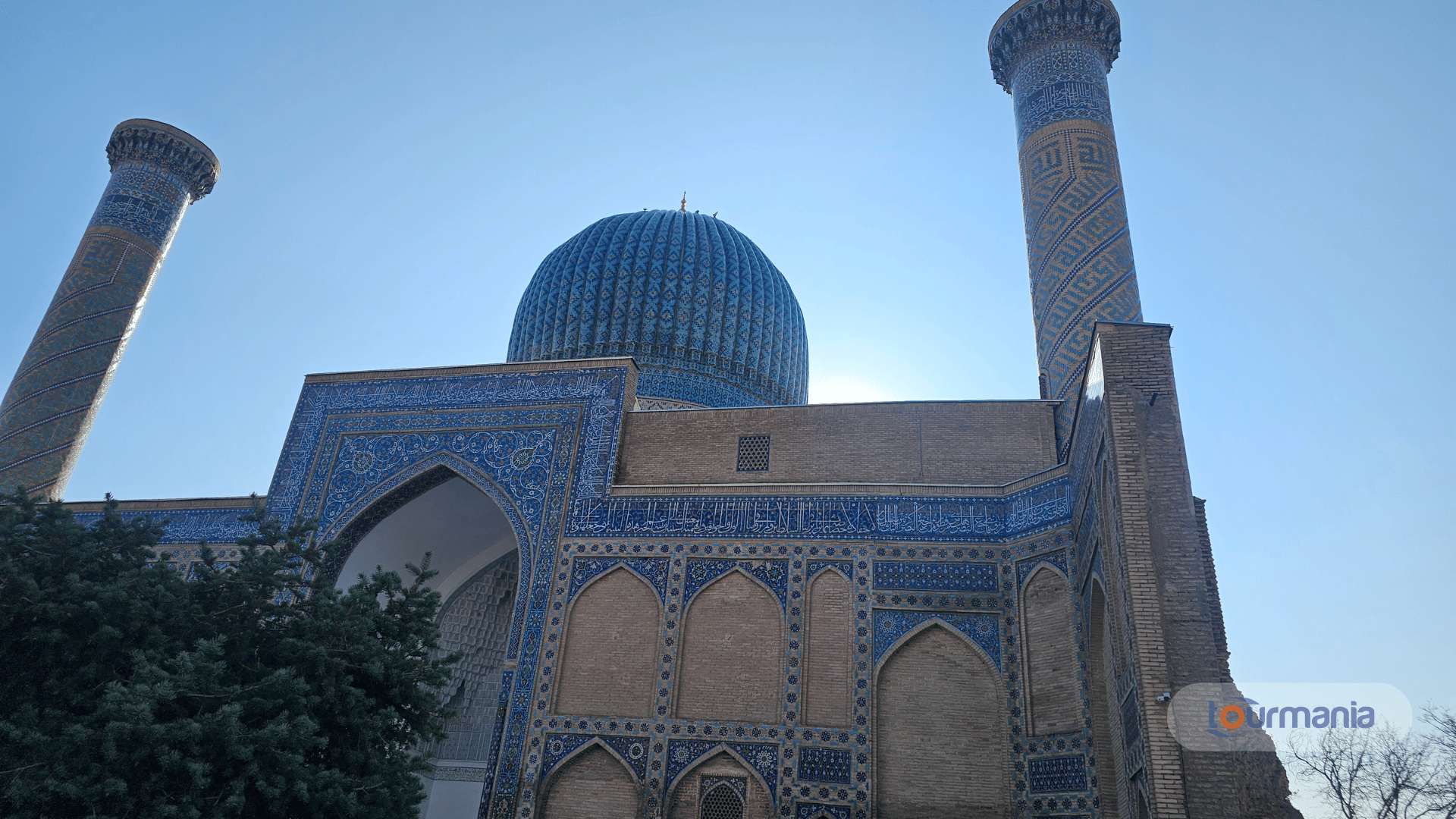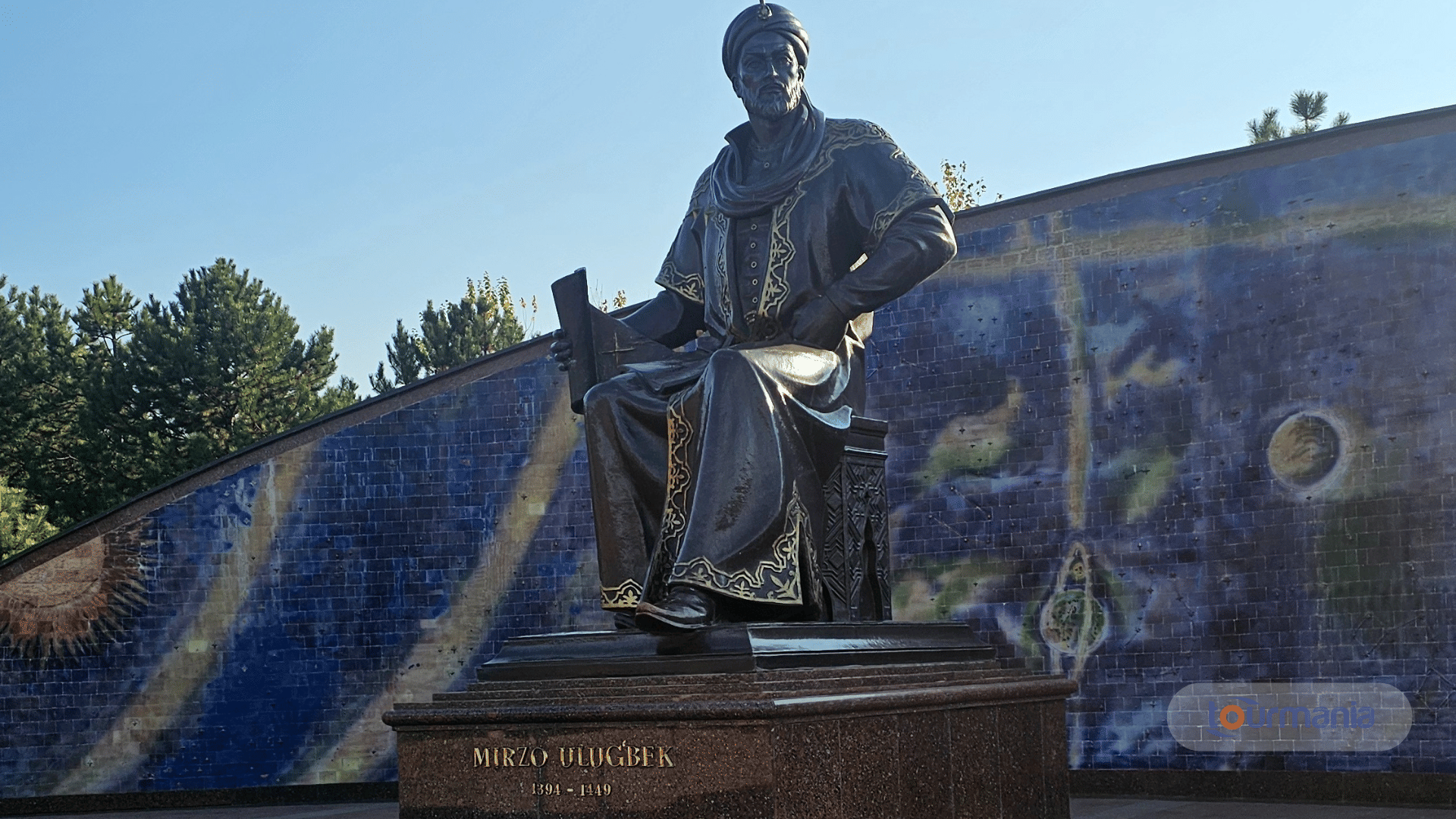Samarkand: Classic Full-Day Tour
Immerse yourself in the vibrant culture, rich history of Samarkand on this full-day guided tour. From bustling bazaars and historical landmarks to breathtaking architecture and lush green spaces.
1.Gur e-Amir Mausoleum
The Gur-e-Amir (meaning "Tomb of the King") is a historical mausoleum in Samarkand, Uzbekistan. It is the burial site of the famous conqueror Tamerlane (Timur), who founded the Timurid Empire in the 14th century and is regarded as one of the most significant figures in Central Asian history. The Gur-e-Amir is a magnificent example of Timurid architecture. It has a large, imposing dome, intricate tilework, and majestic minarets. The structure combines Persian, Turkic, and Mongol architectural styles.
2. Registon Square
Registan Square is one of the most iconic landmarks in Samarkand, Uzbekistan, and is considered one of the most beautiful public squares in the world. It was once the heart of the ancient city of Samarkand, which was a prominent center of trade, culture, and learning along the Silk Road.
The square is surrounded by three majestic madrasas (Islamic educational institutions), each an outstanding example of Islamic architecture with stunning tile work, intricate designs, and grand entrances. These madrasas are:
• Ulugh Beg Madrasa (built between 1417 and 1420): This madrasa was commissioned by Ulugh Beg, a Timurid ruler, astronomer, and mathematician. It is one of the earliest examples of Islamic architecture in Central Asia and is known for its magnificent blue tiles, large portal, and grand entrance.
• Sher-Dor Madrasa (built in the early 17th century): This madrasa was constructed by the Shaybanid dynasty. Its unique feature is the depiction of tigers (shers) on the façade, which is rare in Islamic art due to the prohibition of animal imagery.
• Tilla-Kari Madrasa (completed in 1660): The Tilla-Kari madrasa, meaning "Golden Covered," is known for its luxurious interior, which is richly decorated with gold leaf. It is a fine example of 17th-century Persian-style architecture and features a large central dome.
3. Paper Factory
The paper factory in Samarkand is part of a long-standing tradition of paper production in the region, which dates back to the 9th and 10th centuries. Samarkand, as a key city on the Silk Road, has been a center of culture, trade, and scientific knowledge. The paper-making industry in Samarkand played a significant role in preserving and spreading knowledge across Central Asia and beyond.
4. Lunch at Uzbek national restaurant
Uzbek national restaurants are places where visitors can experience the rich and diverse culinary traditions of Uzbekistan. These restaurants often serve a variety of traditional dishes that reflect the country’s culture, history, and the influence of various civilizations that have passed through Central Asia. Uzbek cuisine is deeply tied to the agricultural landscape, with an emphasis on fresh produce, meats, rice, and bread.
5. Ulugh Beg Observatory
The Ulugh Beg Observatory is one of the most significant and impressive scientific landmarks in Samarkand, Uzbekistan. Built in the 15th century, it was established by Ulugh Beg, a Timurid ruler, astronomer, and mathematician, who was the grandson of Tamerlane (Timur). Ulugh Beg is renowned for his contributions to the field of astronomy, and his observatory played a crucial role in advancing astronomical knowledge during the Islamic Golden Age.
6. Shakh-i-Zinda complex
Shakh-i-Zinda (meaning "The Living King") is a complex of stunning mausoleums located in Samarkand, Uzbekistan. It is one of the most significant and visually striking historical sites in the city and is a UNESCO World Heritage site. The complex is famous for its intricate tilework, historical importance, and spiritual significance, and it is often regarded as one of the most beautiful necropolises in Central Asia.
7. Bibi-Khanym mosque
The Bibi-Khanym Mosque is one of the most famous landmarks in Samarkand, Uzbekistan, and stands as a testament to the grandeur and architectural brilliance of the Timurid Empire. Built during the reign of Emperor Timur (Tamerlane) in the late 14th century, the mosque is one of the largest and most impressive examples of Islamic architecture in Central Asia. The Bibi-Khanym Mosque was commissioned by Timur in honor of his wife Bibi-Khanym, who was one of the most prominent women in his court. According to legend, Timur built the mosque for her after she made a request for a grand structure to be erected in Samarkand, and it is said that the mosque's design was inspired by her beauty and stature.
8. Local Siab bazaar
The Siab Bazaar (also spelled Siyab Bazaar) is one of the oldest and most vibrant markets in Samarkand, Uzbekistan. Located near the Bibi-Khanym Mosque and the Registan Square, it is a bustling center where both locals and tourists come to experience the rich culture, history, and flavors of the region. The bazaar offers a vivid sensory experience, with its colorful stalls, diverse products, and lively atmosphere.


